My body, my rules: the body image conversation is getting queer
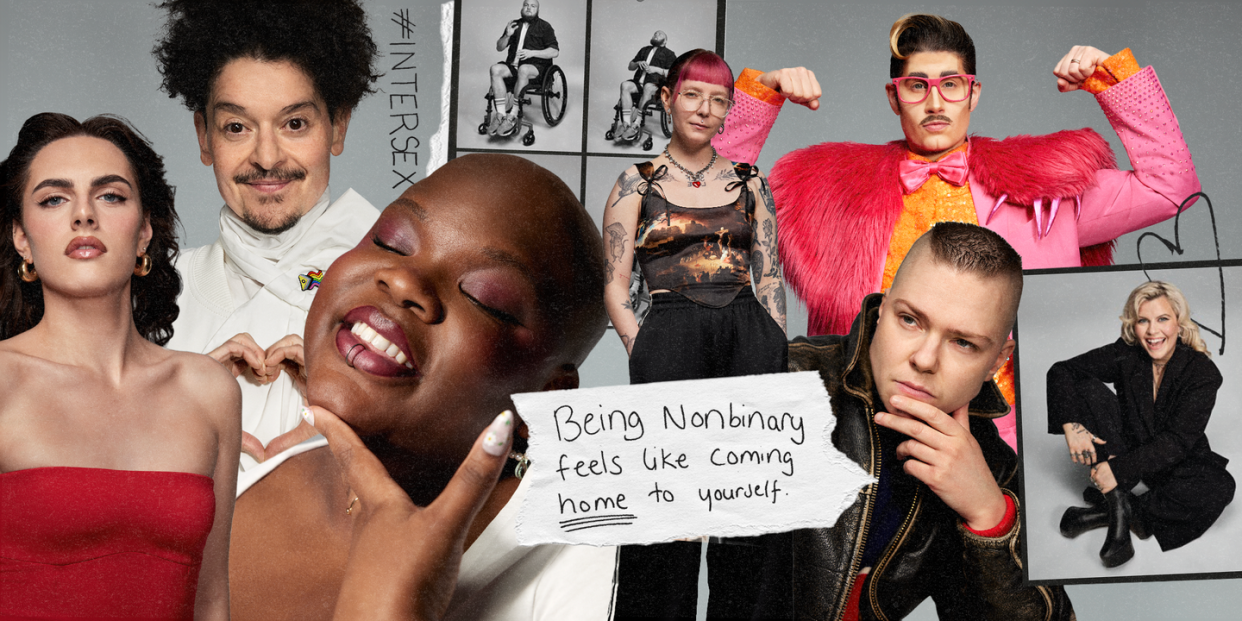
On set for this photo shoot, there was one rule. A rule that – in the media landscape – is not very common. It was quite simply: come dressed as who you are. There was no rail of clothes, no directive to force people into outfits or personas that didn’t reflect who they were. There were hair and makeup artists available for those who wanted them. Some used them, others didn’t. The result? A space where joy shone through and the diversity and beauty of queer bodies spoke for itself.
Unfortunately, this isn’t always the case. While we might be having more open conversations about body image, not everyone is given equal space to explore what confidence means to them, beyond the narrow confines of normative gender and sexuality. What if you don’t want the kind of body you see on TV? What if you feel most confident and sexy when you’re embracing a masculine, rather than feminine, aesthetic? What if your idea of transition doesn’t mean aspiring to ‘pass’ as cisgender? And even if you’re a cisgendered straight woman, what doors are being closed on your path to exploring who you really are and what makes you feel truly yourself?
Mainstream culture repeatedly tries to force people’s individuality, their differences, into a binary. Government debates are treating individual’s bodies as a political playground. And, as a result, those who don’t conform are too frequently othered and attacked. Attacks that stop us all from being able to truly feel at home in our own bodies. So, we wanted to open up that discussion through eight stories. Stories that we hope will make some of you feel seen, feel less alone. Stories we hope make all of you feel more empowered to explore self-expression and fight the neat little boxes that some corners of society want to put you, and others, into.
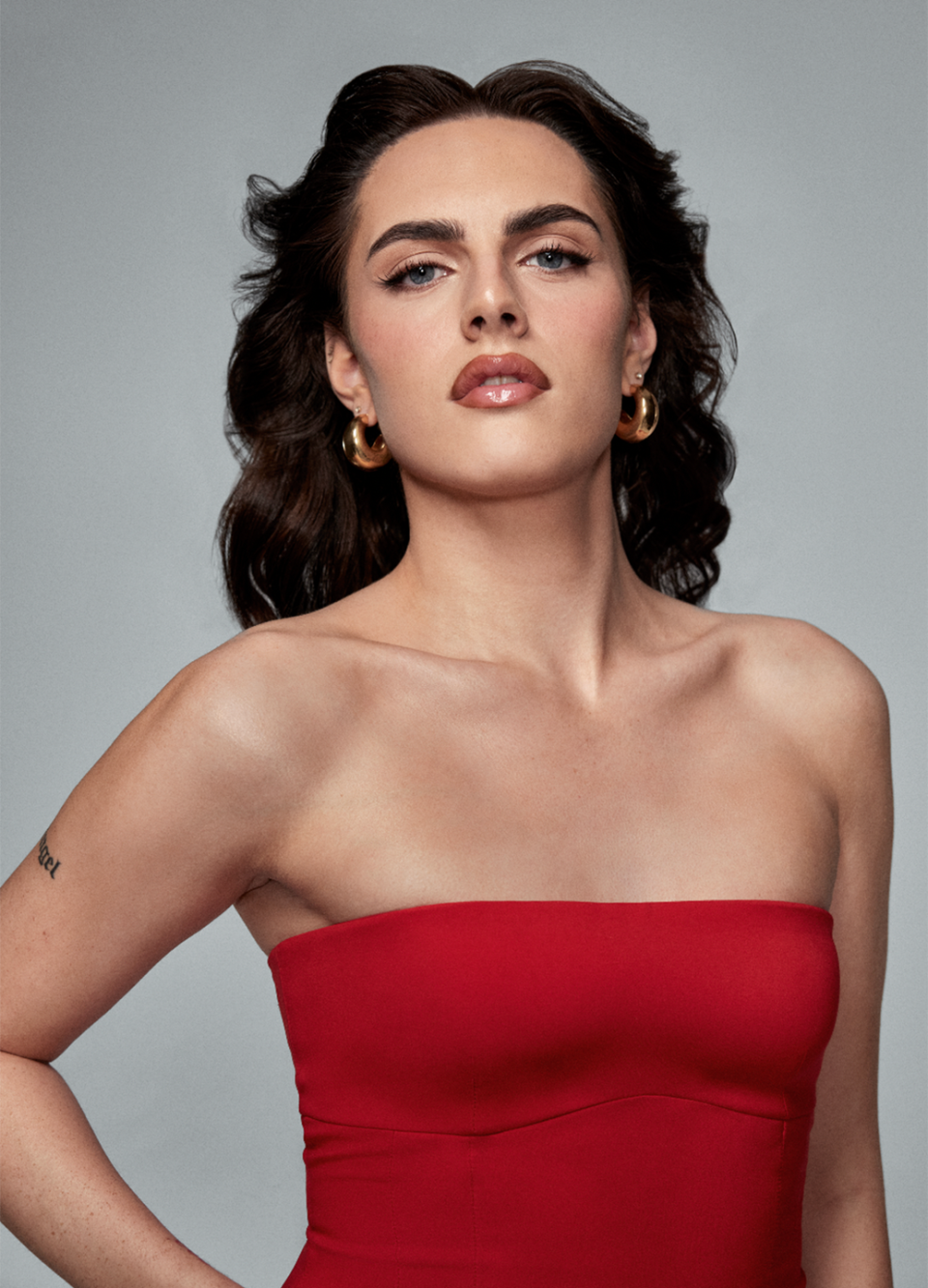
Bel Priestley (she/her), is an actress. She is best known for her role in Heartstopper, and her presence on social media (you can find her on Instagram), where she discusses her transition.
“I’d love to go to a beach, in a bikini, and just be myself. But I can’t. I’d worry everyone was judging me. My insecurities – many of which have been placed in my head by others – stop me from being able to enjoy myself.
“My family and close friends are supportive, and remind me how beautiful I am, but it can be hard to believe them. I’ve been bullied from the age of five, I came out as gay at 11 and a few years after that I came out as trans. That’s when the bullying really intensified, particularly as I was documenting my experiences of transitioning online. When you have our prime minister saying transphobic things, and passing laws about what I can and can’t do with my body, it opens my world and my life up for debate. People seem to get away with saying transphobic slurs and that results in me questioning myself, and who I am. From the bullying, I have ended up with a lot of insecurities. I didn’t feel this way when I was younger, but dealing with ridiculously high beauty standards and navigating them alongside being trans, has changed how I view myself.
When I first moved to London, at 18, I was euphoric. I was going to queer clubs and kissing guys for the first time, I felt free. I grew up in a small town, where there’s almost zero representation of trans people, so being able to surround myself with my chosen family was so special.
“This is what people forget, that, like all young women, I’m navigating social media, relationships and learning who I am. On top of that, I am facing the brunt of being in the public eye. I’m trying to take less notice of cruel comments. I’ve learned the hard way that if you don’t practise self-love you end up putting yourself in situations you don’t want to be in, or with people who don’t deserve you. I do really like my legs, I inherited my mum’s legs and she once won Best Legs in Britain! I’ve also begun to recognise that my insecurities are things other people love in me, like my jaw and side profile.
“I hated my body throughout my teens, so when I turned 18, I decided to get tattoos to feel prettier. I have a couple of butterflies, to represent my transition and my angel number is inked on my wrist – it reminds me I’m always in the right place at the right time. Then, there’s the number 18, as I didn’t think that I’d live to be 18. It reminds me I can get through anything.”
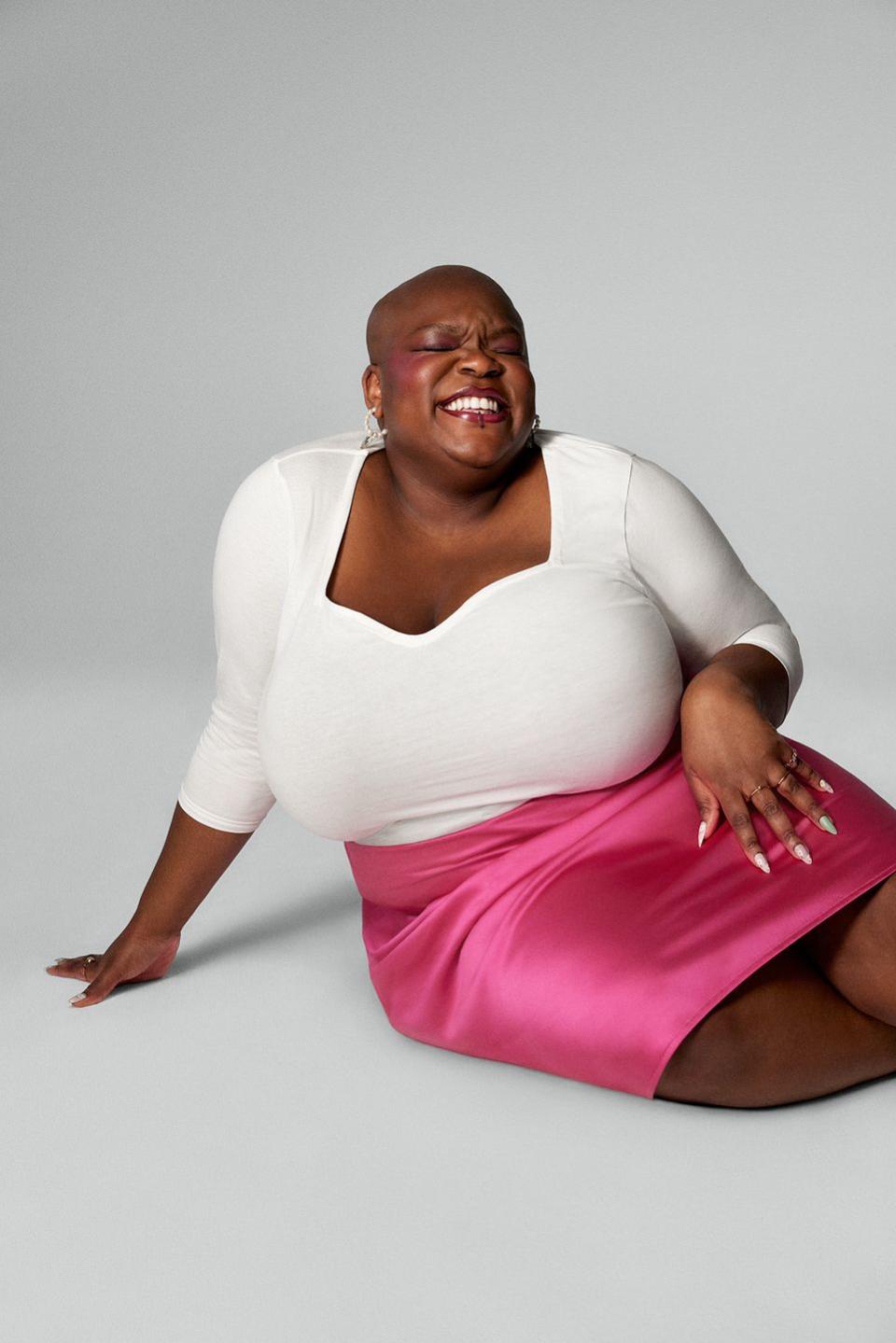
Maz Hedgehog is a poet, writer and performer. They have released several chapbooks including The Body In Its Seasons and Tell Me Who We Were Before Life Made Us.
“The saying that Black people have to work twice as hard for half as much doesn’t just apply to professional fields. I am keenly aware that part of the reason I dress and present the way I do is because when I am well dressed, when I have makeup on, when I’m put together; I am treated better. And not ‘treated better’ as in special treatment, but ‘treated better’ as in receiving basic respect in public. Even so, much of our environment is not built to fit fat bodies.
“But, despite that, being fat is kind of awesome. I really enjoy existing in a fat body. I enjoy the way that my body moves and the awareness I have of my body because of it. Because I’m less likely to have people be immediately interested in me because of the way I look, I can be reasonably certain that people like me for who I am.
“My identity is a complicated one. Gender- wise, I’m a nonbinary, a-gender, femme. Sexuality wise, I’m a bisexual lesbian. The lesbian part has only come about recently, whereas I have been part of bi communities for the past 11 years. I am queer because my flesh calls to queerness, and part of that is taking pleasure in what my body wants and needs. I love to eat. I love to cook. So cooking and eating in ways that take time to savour whatever it is that I’m enjoying, really grounds me in my own body. Food is a way for me to find pleasure in my body and feel connected to my body in defiance of fatphobia and anti- Blackness, and of a culture that distrusts pleasure and believes that in order to be a good person you have to sacrifice. But part of what makes me a better member of my communities is that I am able to find joy in myself and try to bring joy to other people.
“I like the word ‘fat’ because it is a very simple descriptor of my body and, importantly, it connects me to the fat liberation movement. I use the word dyke for similar reasons, because this thing that you fear, this thing that society says you should run from: I am that. I am a fat, Black dyke. And if that’s the worst thing you can say about me, then I am winning.”
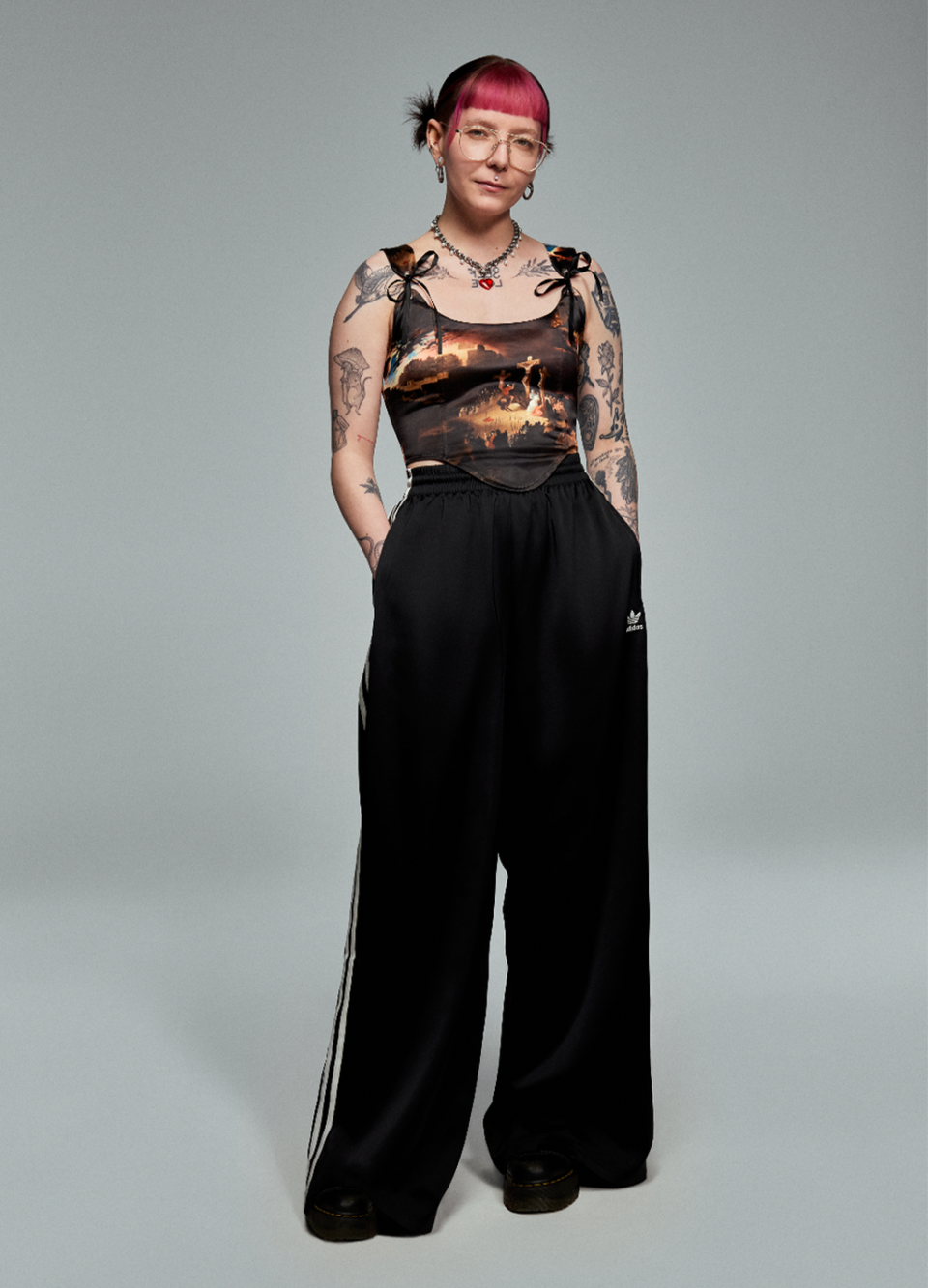
Dee Whitnell is a trans, nonbinary activist. They are the founder of the campaign Trans Kids Deserve to Grow Up.
“One day, an outfit, my body or my hair will make me feel so good. The next, that same look can make me feel so uncomfortable. Similarly, there are moments when I love making myself feel good, and I love being intimate with another individual, and looking at my body. But then a few months later it’ll be the opposite and I’ll have to cover myself with a blanket when I’m masturbating so I don’t see myself. As somebody who has both gender dysphoria and body dysmorphia, there’s this tug between experiencing pleasure but also feeling dysphoric about it.
“Using the trans label is something I’ve only recently been exploring. For a long time, I felt like an outsider. I didn’t fit in with the girls or the boys. I actually stumbled across trans identities through a Hollyoaks storyline, where one of the main characters came out as a trans boy. It was the first time I realised that you didn’t have to align yourself with your gender at birth. But because that was the only representation I had, I thought I was a trans boy for a while. It wasn’t until lockdown that I came across the term “nonbinary” and it was like I’d come home.
“While trans and nonbinary people experience gender dysphoria, I think a lot of other people can also understand that feeling of looking at yourself and thinking ‘I don’t feel comfortable’ because of what society has pushed on us. I think everyone, regardless of gender identity, should explore and experiment with their gender expression. It can bring so much joy.
“Having a trans boyfriend has been another element of exploring my body, and pleasure, on a new level. Through that I’ve really come to love my body again. Being intimate with someone who is queer and trans allows you to challenge those stereotypes that people put on you. I can just enjoy sex without worrying about how my body looks . We were each the first person we showed our chests to. We counted down from three and then showed each other. It was such a freeing moment and made the intimacy so much more intense.
“Tattoos are also a way of reclaiming my body. It’s a way of turning your body into a work of art. I have my pronouns tattooed on my hands. Even though I might change my pronouns in the future, this was a moment when I came out to my family and to the world and I reclaimed myself. I wanted that always on my body. That’s a part of my story that I never want to forget.”
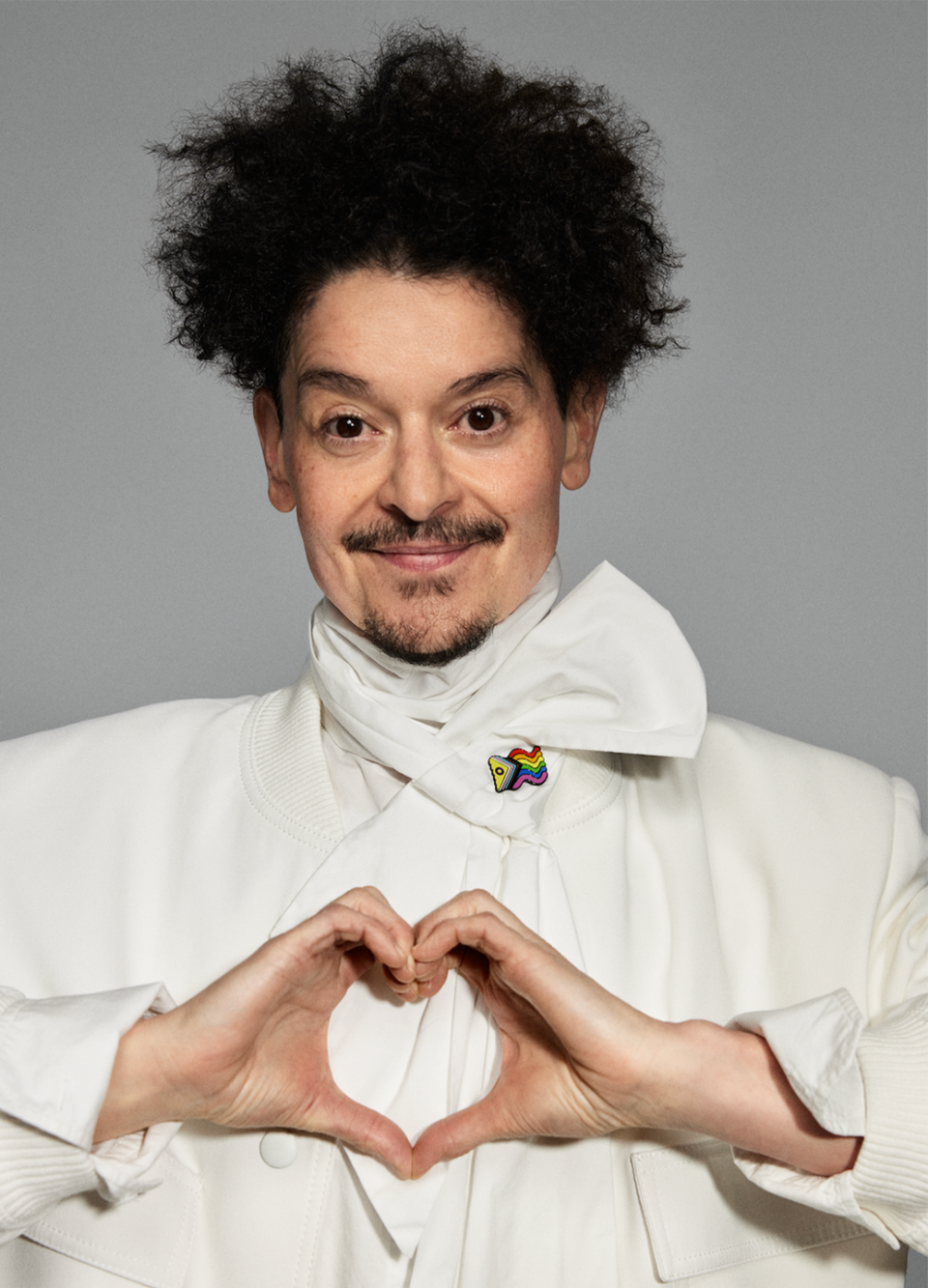
Valentino Vecchietti (she/her) is a writer, artist, and intersex consultant. She is the founder of Intersex Equality Rights, an intersex-led organization focused on research, campaigns, and advocacy. Valentino created the Intersex-Inclusive Pride flag, which is now used globally. Valentino’s Global Inclusive Pride flag Project, works globally to create LGBTIA+ inclusion, representation, and funding. Her work has been recognised on the Diva Power List, The Pride Power List, The Independent Pride List, and Lesbian 100 List.
“I'm best known for creating the Intersex-Inclusive Pride flag in 2021. We were in lockdown during the pandemic when my flag went viral across the globe. I never thought something like that could happen to me.
People came together to say, ‘We always wanted to show our allyship, we just didn't know how, and the Intersex-Inclusive Pride flag gives us permission to show that we're with the intersex community.’
I was born with an intersex variation, which means I have more diversity in my sex characteristics than is typical. There are over 40 distinct diagnoses of intersex variations. We’re often diagnosed during our infancies, childhoods, and teenage years. Many of us are subjected to non-essential medical interventions performed to erase our natural diversity. This can feel body shaming and isolating. It can cause emotional trauma and irreparable harm to our bodies.
Growing up, my life was a struggle. I'm a second, generation, immigrant with mixed heritage. My dad came to the UK in the Southern Italian diaspora after the second world war. I grew up in a working class, single parent family. We were very poor, and during my early childhood we were homelessness.
I was often very ill and I missed lots of school. My dad was supposed to write a letter to my teacher to say I’d been ill, but he struggled to do this. I would get into trouble at school because I couldn't provide a letter, and there was no understanding that my dad might have a language barrier.
Teachers assumed I was lying. My dad wouldn’t talk to me about it. I didn’t know how to explain, and so my teachers punished me. As the child of an immigrant, I felt mistrusted, and I didn’t have much support or understanding.
I remember when I was in primary school the teachers wouldn't teach me to spell my surname, instead they taught me to write the letter V. Up until about the age of seven, whenever I drew a picture or wrote a story, I would write my first name and put the letter V after it, because I thought was my full name.
One day, a school inspector observing our class, looked at the picture I drew and said, “why haven't you written your full name?” I said, “I have.” And she replied, “That's not your surname.”
The Inspector shouted at the teacher, ‘Why doesn't this child know how to spell her surname?’ My teacher was upset, and explained that my name was too foreign and complicated to teach me. I bowed my head; my face was hot and red with shame. I felt like I had done something wrong. My teacher was already unkind to me, and I knew this would make things worse.
When I was a child, I didn’t know the word intersex, I just knew my body was different. I didn’t know how to talk about it because no one talked about it to me. I remember as I got older more people noticed that I was different. I was bullied in my middle and upper schools: because my body was different, because I am mixed and my dad wasn’t white, and because I was poor.
My father was very religious. He taught me his cultural heritage and religion through story telling. I loved hearing him tell me stories from the Bible, Aesop’s fables, and traditional folk tales.
Near the council house where we lived, there was a women's centre. The building had a women’s refuge at the back, and a cafe at the front. We walked passed it when my dad took me to the corner shop. We would see all these strong, powerful, women in jumpers and dungarees wearing army boots. My dad would tell me how dangerous these women were. He didn’t say the word ‘lesbian’, but he basically taught me that these women were against God and would burn in hell.
I grew up feeling a mixture of awe and fear for these women. When I was older and realised I was a lesbian, I never felt safe to tell him. My dad died some years ago. I know my dad loved me and was just trying to protect me.
For most of my life I thought I could never be myself in any kind of embodied sense. I believed I would always live with layers of secrecy and shame.
Coming back to 2021, and that transformative moment when my flag went viral during lockdown, for the first time in my life I was suddenly connected to people all over the world, contacting me to thank me. It didn't matter what my body looked like, they wanted to celebrate that I had created space on the Pride flag for the intersex community, and that I was shining a light on intersex human rights.
I’ll always live with trauma from my early years, but my flag going viral has profoundly changed my life, and my relationship to my body, and I’m intensely grateful. I now live openly as an intersex woman and a lesbian. I’m proud of where I come from and who I am.”
EDITOR’S NOTE: There were some errors in the print version of this article, which have now been amended. Valentino was referred to as being born with intersex variety when the correct term is intersex variation. Her father has also passed, which was made unclear by a typographical error.
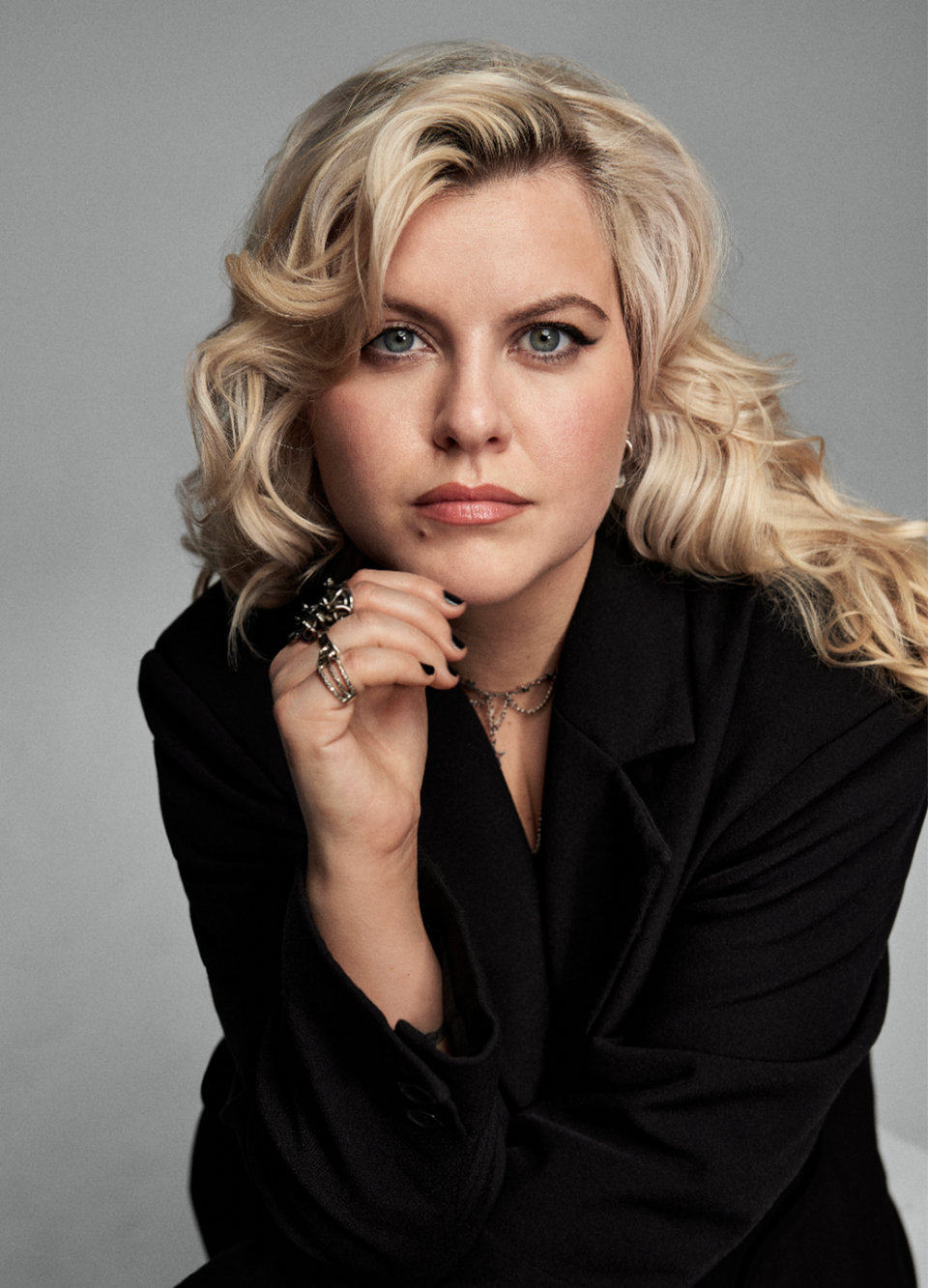
Catty is a musician, and her latest EP is out this summer.
“My queerness seeps into everything I do. From what I wear to how I perform. It’s just who I am, and I see allowing that as a kindness to my younger self. I came out in my early twenties, and I don’t think I realised how much [not being out] affected me. I used to cry all the time and I was deeply uncomfortable in my skin.
“At 20, I came out as bisexual but, almost as soon as I started seeing women, I realised I am a lesbian. I’d held on to a lot of internalised homophobia for so long, and I had to work through that. I used to always try to be super-feminine – which is still a part of how I do my hair and makeup – but how I dress is masculine: I’m most comfortable in a suit and bra.
‘Being a musician has also impacted my body image. This industry demands that you look a certain way, and so many of my friends have issues with body image and food because of it.
Now I’m trying to tell myself: I am a musician, I look like me and that’s good enough. Sleeping with women has also helped me accept my body, as I have never looked at another woman and thought, ‘Ugh, your arms’” yet I used to look at myself in the mirror and think, ‘Ugh, your arms.’ It’s so important to me to be kind to those around others, but I don’t offer myself the same treatment. I’m working on that. I just know that I am so lucky that my body is here at the same time, on this earth, with my friends and family. That it puts me on stage, to sing and perform. That’s such a blessing.”
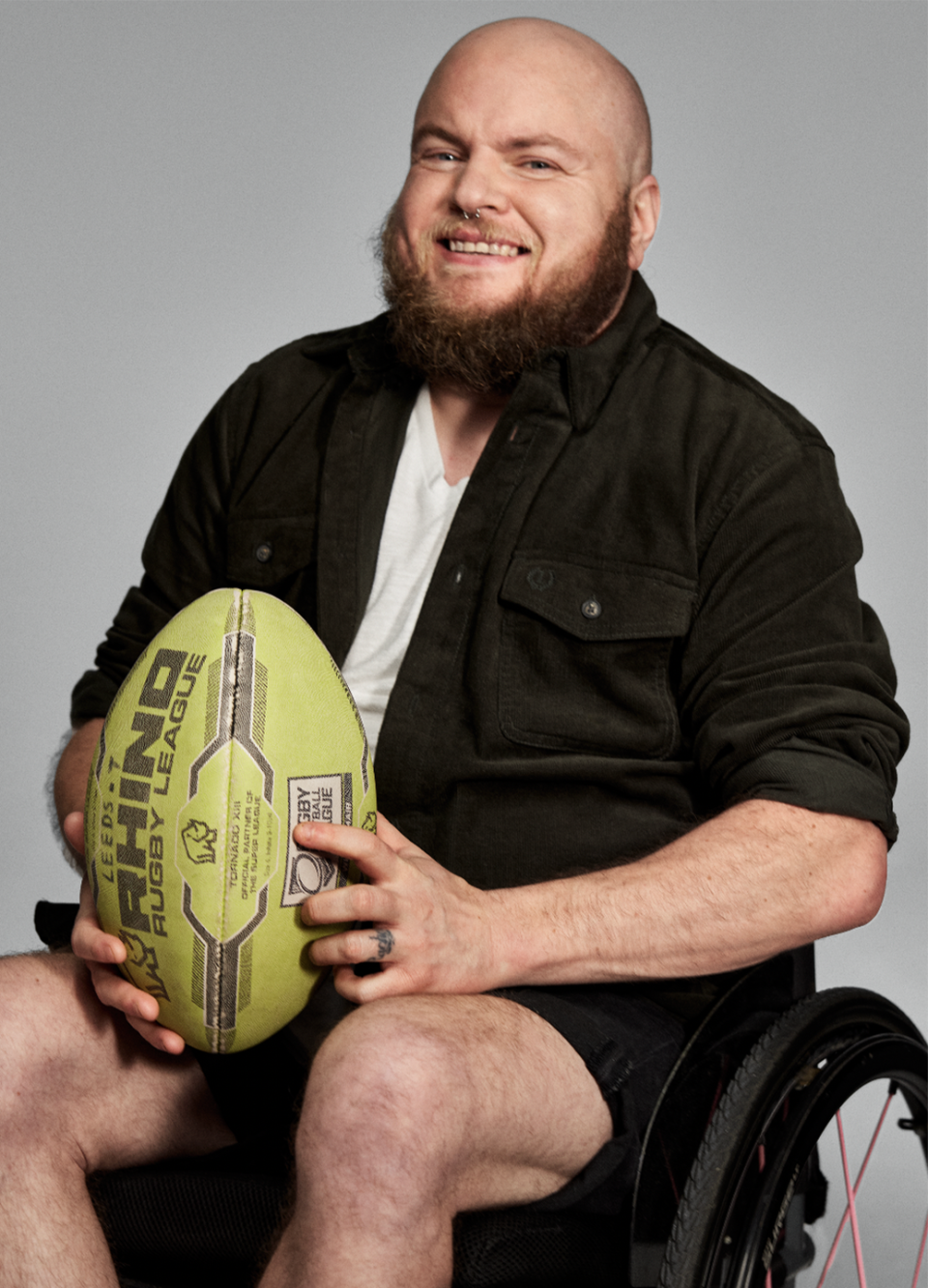
Verity Smith is a youth engagement manager for Mermaids, and plays for Leeds Rhinos. He lives in Leeds.
“If anyone asks me who I am, I always say ‘I am a rugby player.’ I am also a gay trans man, but when I am on the pitch, I don’t think about my gender, my sexuality, I just think about the ball.
“I started playing when I was 11, but playing women’s rugby when I knew I wasn’t a woman was hard. I wanted to come out, but there were bans on elite trans rugby players, so if I did, I wouldn’t be able to play. I couldn’t risk that. After losing my parents, my sport was my one constant. For many years, I lived life as a lesbian. But, slowly, and with the support of my teammates, I was able to evolve into who I really was. At 26, I said to my grandma, ‘What if I identified as a man?’ She said my parents had always known, and they just wanted me to find my expression by myself. When I was young, I wanted to be outside with the boys, my top off, so, as an adult, when I had my top surgery, it felt like freedom. I thought I’d be this really good-looking man... but I went bald and got this dad-bod! I laugh, but now when I look in the mirror my reflection fits who I have always been.
“In 2018, I was injured due to a rugby tackle and became a wheelchair user. I play wheelchair rugby now, and it’s been a huge adjustment as, at first, I really missed the running game. But I still get to play the sport I love, and I’ve been able to inspire younger people to do the same. I get a lot of messages asking ‘I’d love to play, but can I? I’m trans.’ Sport connects you to your body, and community, and I don’t want anyone to miss out on that. I’ve created an app called Tribe Identity, which lists inclusive sports teams and facilities – there are so many barriers to trans people in sport, like feeling comfortable in changing rooms, that need to be broken down. Unfortunately, it feels like hatred is growing, so it’s vital that trans people find places they can feel safe to play the sport they love.
“I used to think that, if I was my authentic self, I would have to give up rugby and that I’d never find love. But I get to play every single week, and I live with my boyfriend and two dogs. I carry so many scars, but I can look at them now and see that they were all part of my journey.”
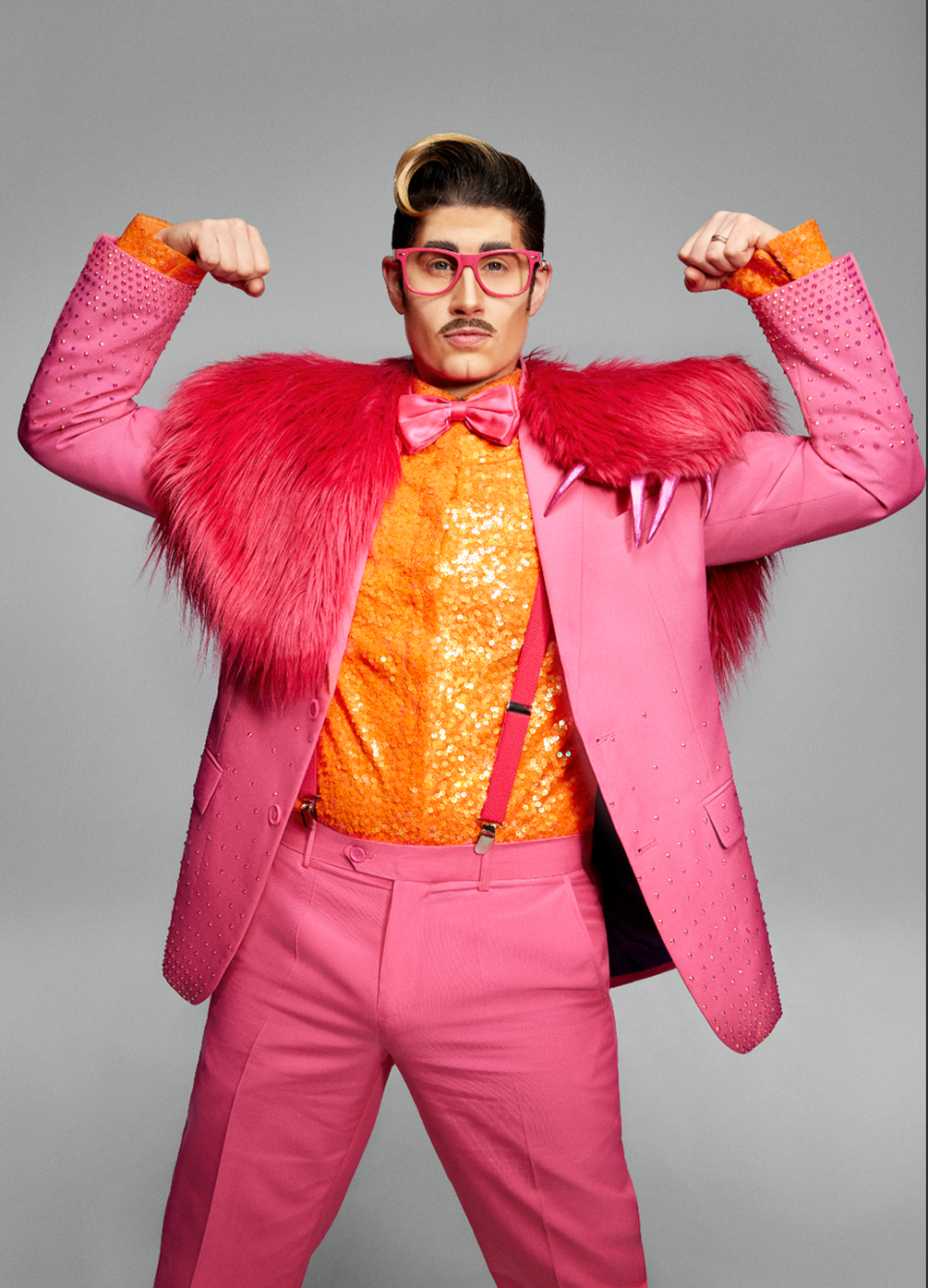
Adam All is co-founder and co-host of dedicated drag king cabaret show BOIBOX. They identify as nonbinary/gender fluid. In drag their pronouns are he/him, out of the drag they’re they/them.
“Pirates, knights, Peter Pan... even Bambi was a boy, and, from three years old, I began to dress up as all sorts of male characters. I’ve never been able to escape queerness. I was endlessly boxed in as a tomboy, or fully misgendered. I grew up under Section 28, which affected my entire childhood and education. The impact it has had on how I view myself and my body, has been huge. Under the section 28 law, no authority could present or promote homosexual relationships as healthy or normal, and so language was limited, representation was nil; even historic figures were masked. So, as a kid, who I was felt like an illness, and certainly that was the response from my peers. I came out as gay at 14 and by 17 it was clear to me that my identity did not match the female gender I had been assigned at birth. At 18 I began exploring the idea of trans. Was I a man? Then, at 20 and in university, a friend introduced me to the idea of gender neutrality. It was like a light came on. I’ve continued to allow myself a fluid and changeable understanding of gender as it is and feels to me. I would say there isn’t really a box that works for me, and the rules seem arbitrary.
“Performing as a drag king, however, fits me like a glove. Expressing and deconstructing these walls of societal gender expectation isn’t just a life passion, but, put simply, without it I don’t make sense. I feel empowered and confident in drag, feeling masculine with my broad shoulders and muscular legs – being considered ‘manly’ is not demeaning for me at all. It’s where I hold all my strength and it’s how I pay my bills. It’s frustrating when people see me in drag and say ‘Yass Queen’, as it completely defeats the point of my work. But what’s even more annoying is how often strangers feel the need to stare at my genitals, when I’m out of drag. Presenting as queer all the time seems to give people a licence to think about how, and with whom, you have sex, when that information is private.
“Despite all of this, I am very grateful for my body. I enjoy being strong, dexterous, flexible and capable, and, although I take great efforts to maintain those things, I will also be grateful to live long enough to see those fade away. It’s worth enjoying whatever your body can do, and equally, hanging whatever bits of clothing off it that you fancy. It genuinely shouldn’t matter that much – that’s why I do drag; to point that out.”
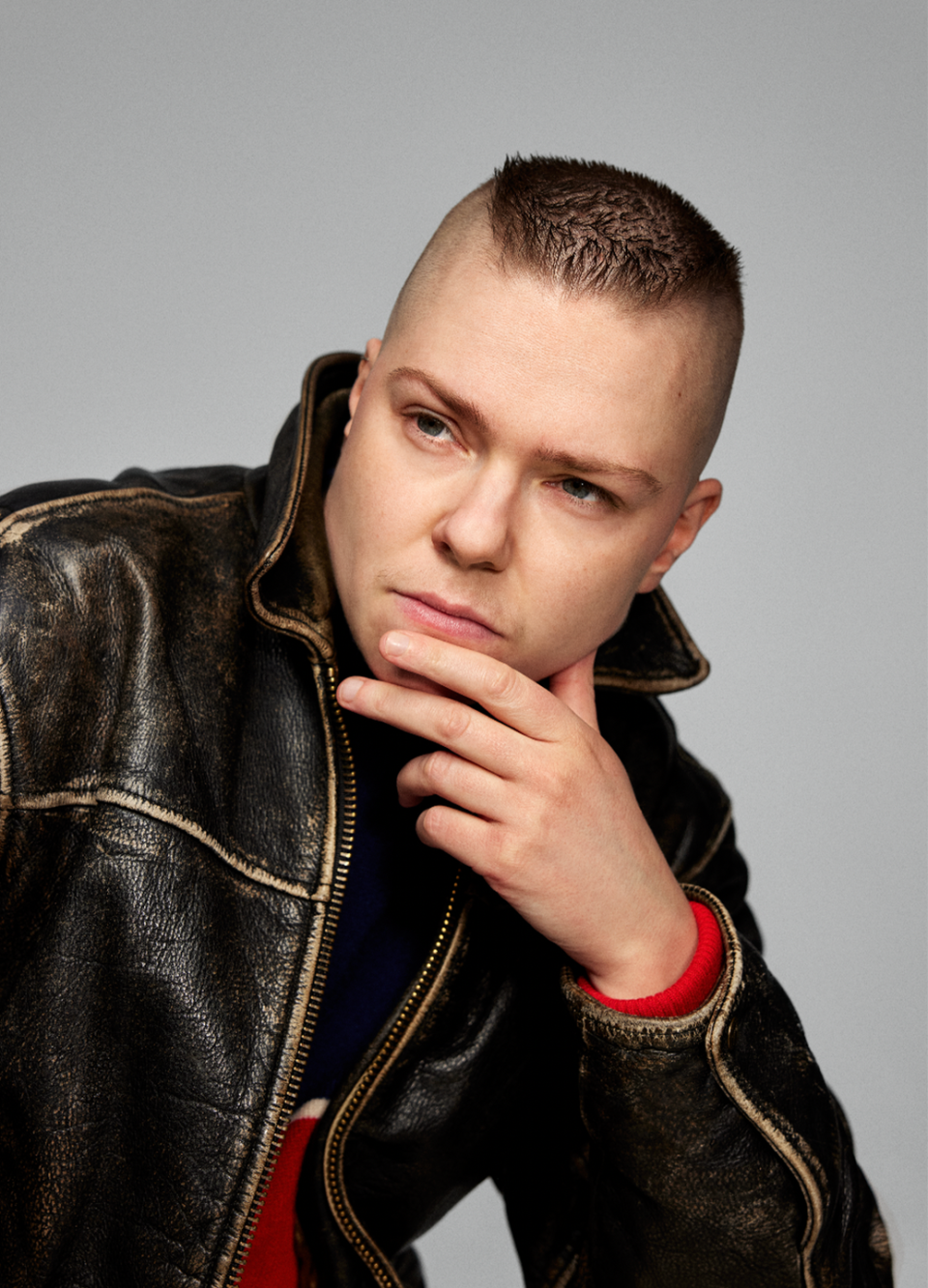
Martha Summers is an architect, artist and leatherworker, living and working in London. They are the designer of a number of queer community spaces, including the London LGBTQ+ Community Centre, and the artist behind TOOLbelt, a dyke-camp sculpture that combines a strap-on harness with a builder’s toolbelt.
“I can remember waking up one day, aged 15, and thinking ‘I need to stop being myself.’ I’d moved schools three times and, for survival, I decided to become someone entirely different to make my life bearable. I continued with that until I was 25. I had boyfriends and long hair, and I was working as hard as I could to be a straight woman. In 2016, there was a personal and political shift, and I felt able to explore who I was. I came out as a lesbian and, now I describe myself as a butch dyke who is a-gender, which essentially means I don’t have a gender identity. Gender is something other people have put on me – even when I wore a skirt I would be misgendered. There was always something about me that made me unconvincing as a cis woman.
“These days, I just want to do what feels good for my body. I feel like I’ve quit gender as much as you can. I let the natural butchness I was born with come out, particularly in queer spaces where I feel I’m speaking a language that others understand. Unfortunately, I am not always treated with respect – I now cannot use gendered bathrooms, as every single time I have used a women’s bathroom there was some sort of incident. I never know how I am going to be treated.
“Queer selfhood is like DIY. You can’t just go into a shop and have your identity served to you, you have to go and find what speaks to you. I’ve now found different hacks that make my body feel like my home. I find summer trickier so, for swimming, I wear a rash vest, which is tight but in a butch way. I also adapt many of my clothes, using my sewing machine. But when I do find something that just fits in the first place that’s an incredible feeling. That’s why I love my strap-on harness. It’s not so much a sex toy, but a tool that instantly connects me to my body. When I was younger, I was constantly performing, trying to fit in. But now? I’m just vibing.”
You Might Also Like


